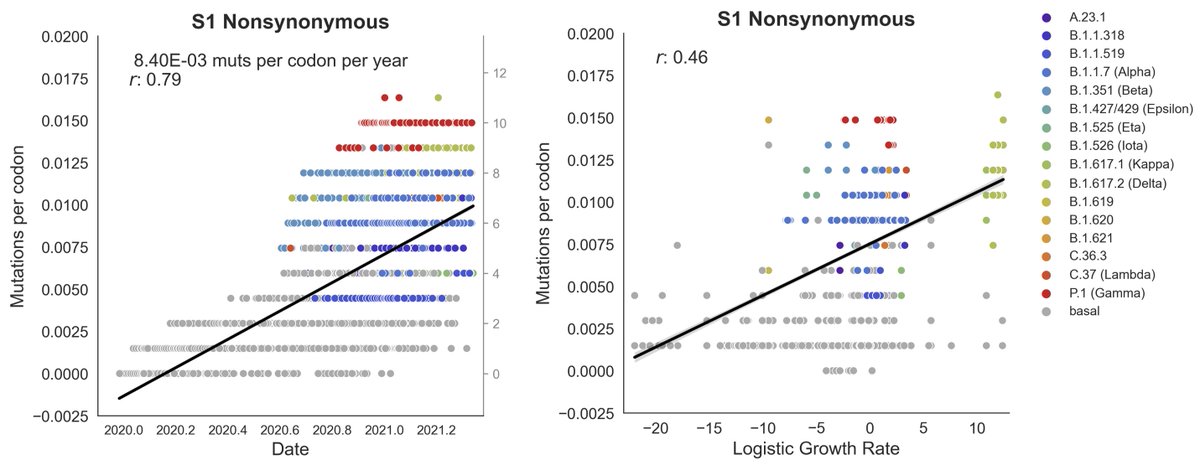
The evolution of SARS-CoV-2 in the past year has been remarkable with Delta increasing transmissibility by perhaps 2.2X over "non-variant" viruses. 1/14
https://twitter.com/trvrb/status/1447566579646930944
We should expect this evolution to slow as SARS-CoV-2 continues to adapt to the human host, but when should we expect this? Here, I propose that we've already seen slowing between 2020 and today. 2/14
One very important concept here that I keep coming back to in thinking about evolution is @GreatDismal's quote that "the future is already here. It's just not evenly distributed yet". 3/14
At this point, basically all circulating SARS-CoV-2 is Delta. However, Delta viruses arose in close to current form back around ~Oct 2020 (nextstrain.org/groups/blab/nc…). 4/14 

This ~Oct 2020 virus would have existed in a single person, and even though this virus would have been significantly more transmissible back in ~Oct 2020, it still takes ~9 months of exponential growth for descendants of this single infection to become globally predominant. 5/14
The SARS-CoV-2 future existed in ~Oct 2020, it just wasn't very evenly distributed. 6/14
In work with @KateKistler and @huddlej, we found that the S1 region of the spike protein appears to be the focus of adaptive evolution in SARS-CoV-2, where S1 mutations are associated with more evolutionarily successful viruses. 7/14
https://twitter.com/trvrb/status/1437519281760079873
If we look at the evolution of S1 in Delta viruses we can see a rapid accumulation of S1 substitutions from ~Mar 2020 to ~Oct 2020 and then relative stasis after this point. 8/14
The yellow lineage tracks Delta viruses. In ~Oct 2020 Delta has 7 S1 mutations relative to non-variant circulating viruses with 1 to 3 S1 mutations. But from ~Oct 2020 to today there has been few additional changes in S1 in Delta viruses (nextstrain.org/groups/blab/nc…). 9/14 

This accumulation of S1 mutations in mid-2020 can be seen across different variant viruses. This is Figure S5 from Kistler et al. (bedford.io/papers/kistler…). 10/14 

We're left with a dynamic in which variant viruses mutate into existence over the course of 2020, are initially rare, but appear to burst onto the scene in early 2021 due to exponential growth. Competition over the course of 2021 leaves only Delta viruses standing. 11/14
This results in this picture of S1 mutations in sampled viruses where the spread of variant viruses in early 2021 causes a rapid increase in S1 mutations in the population. But after the sweep of Delta in July 2021, S1 accumulation in the population has basically ceased. 12/14 

I highly doubt that SARS-CoV-2 has hit a wall in terms of its evolutionary potential, but I do think it's safe to conclude that evolution, at least in terms of S1, has been slowing in the past year and a half. 13/14
Although evolution may be slowing, based on rapidity to date, I still anticipate with rising population immunity that we'll see a shift in evolutionary pressure towards immune escape and at endemicity the virus will undergo continual antigenic drift. 14/14
https://twitter.com/trvrb/status/1448297973985816589
• • •
Missing some Tweet in this thread? You can try to
force a refresh











